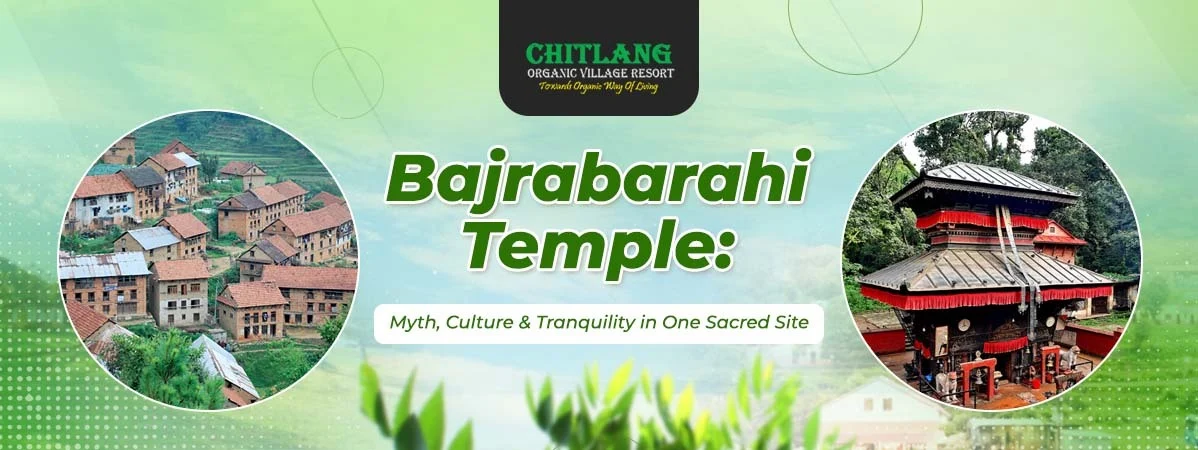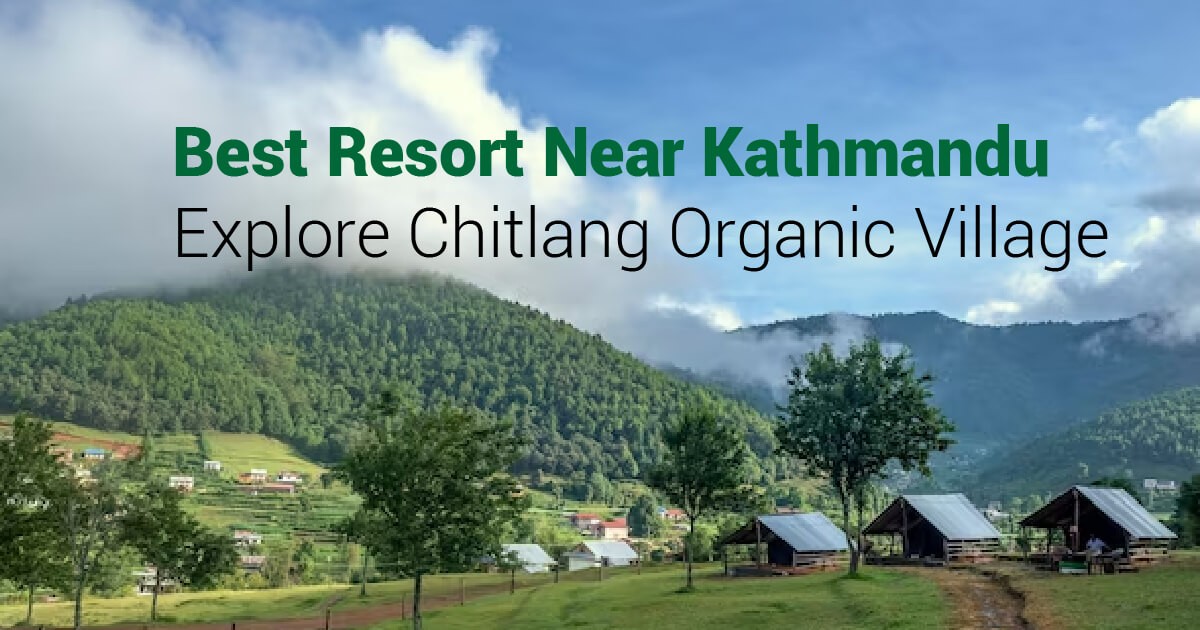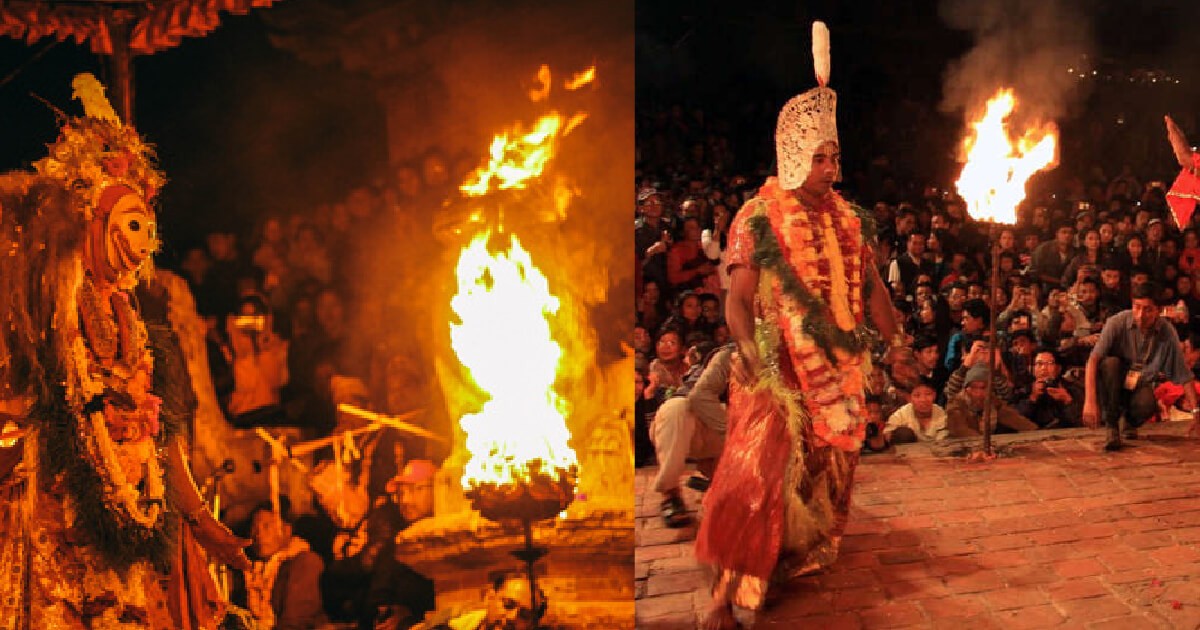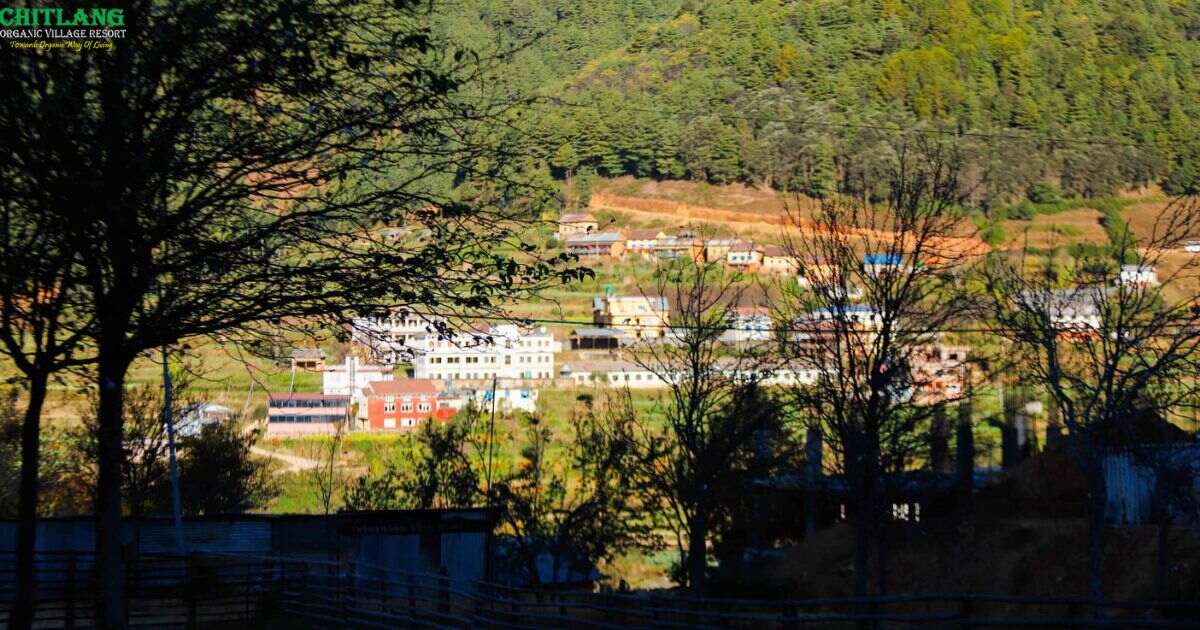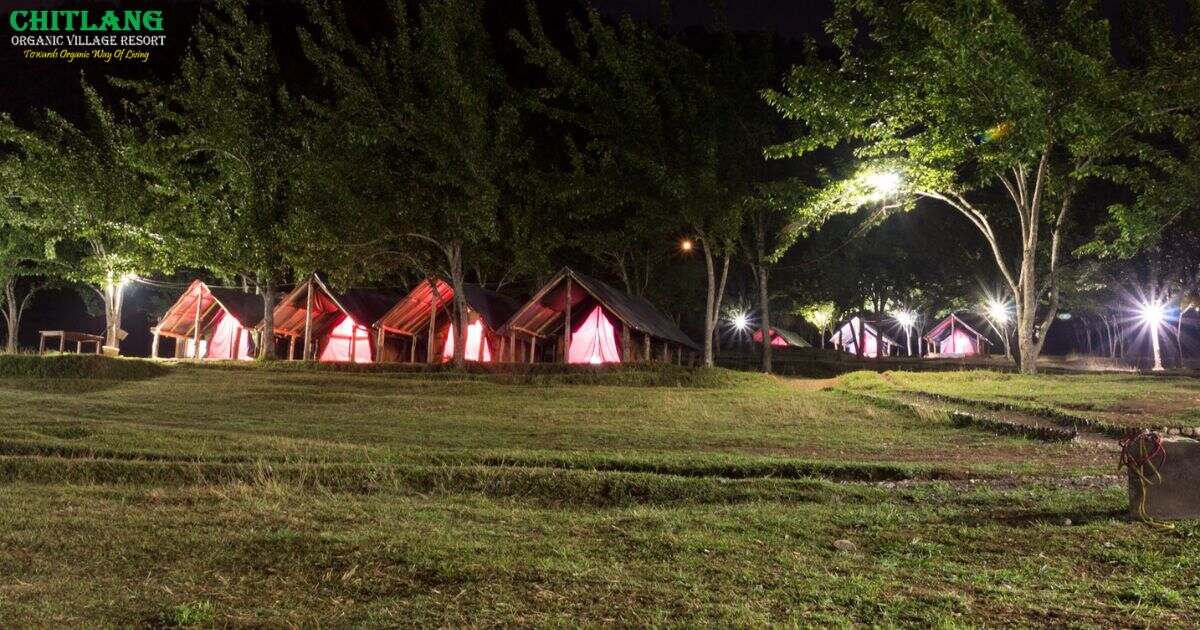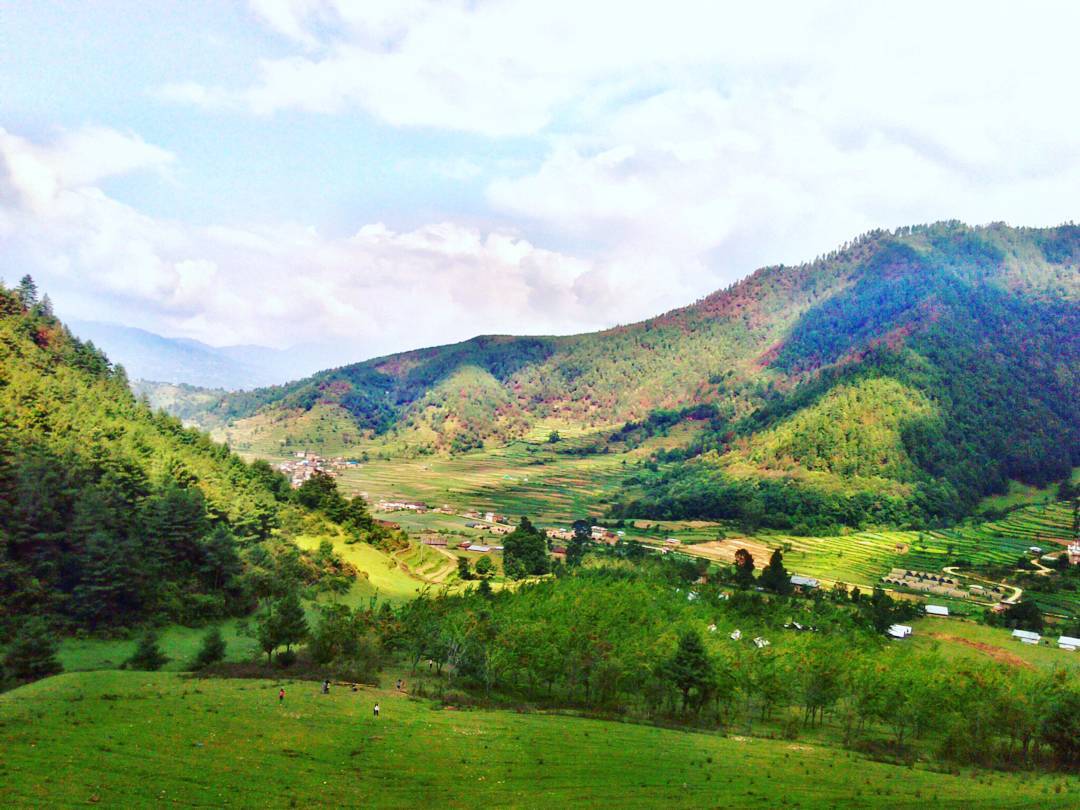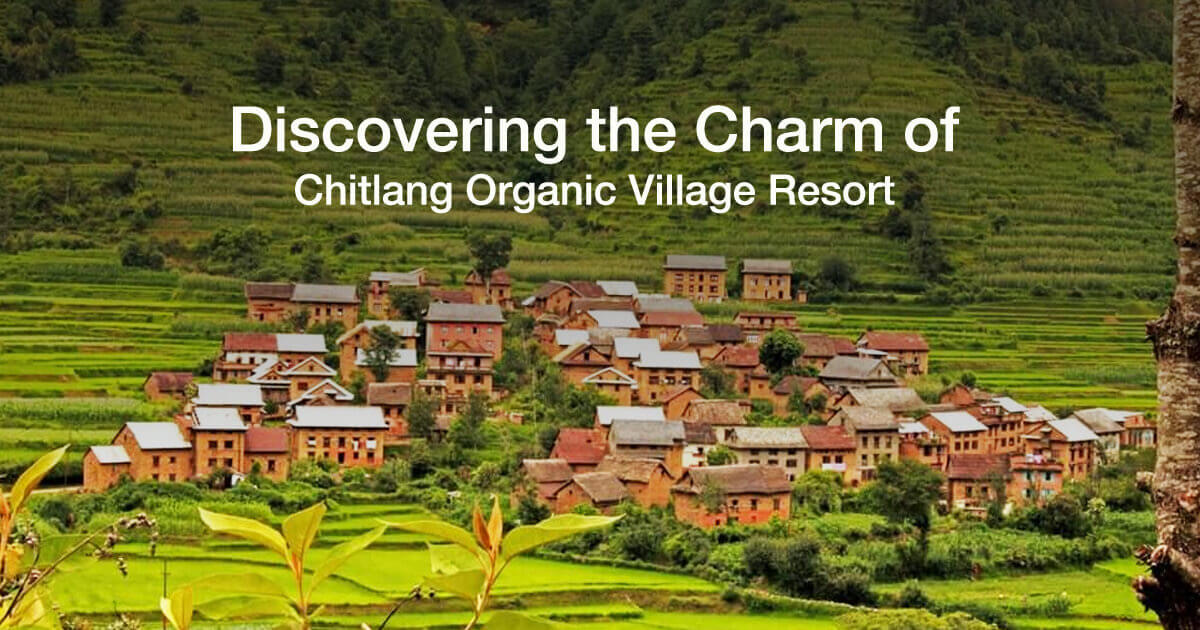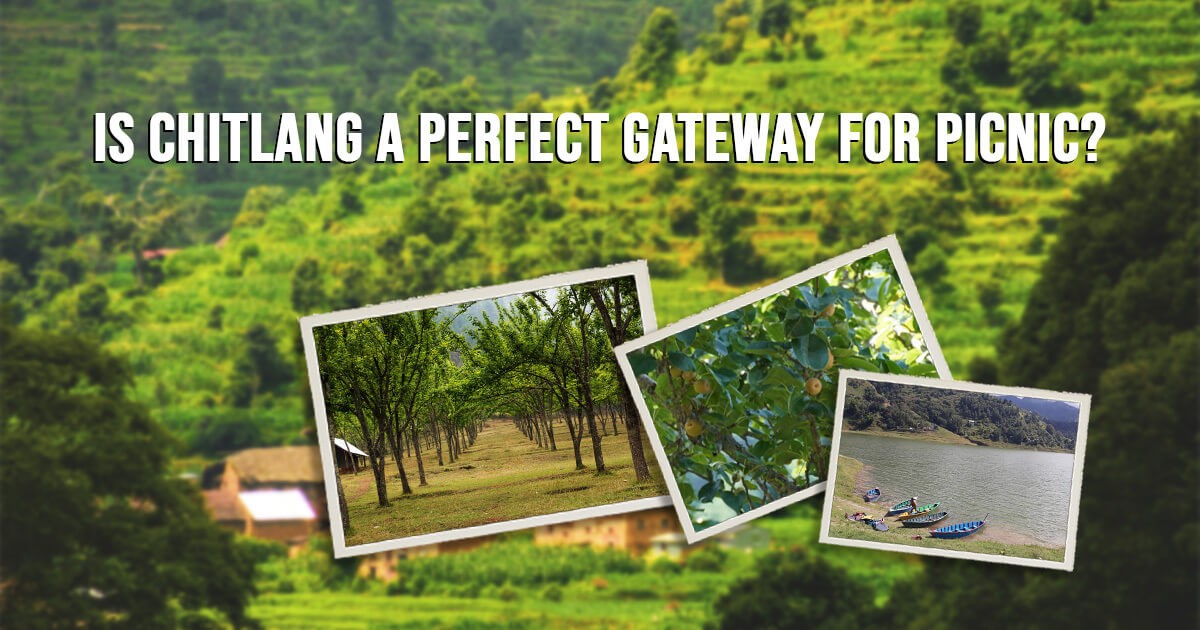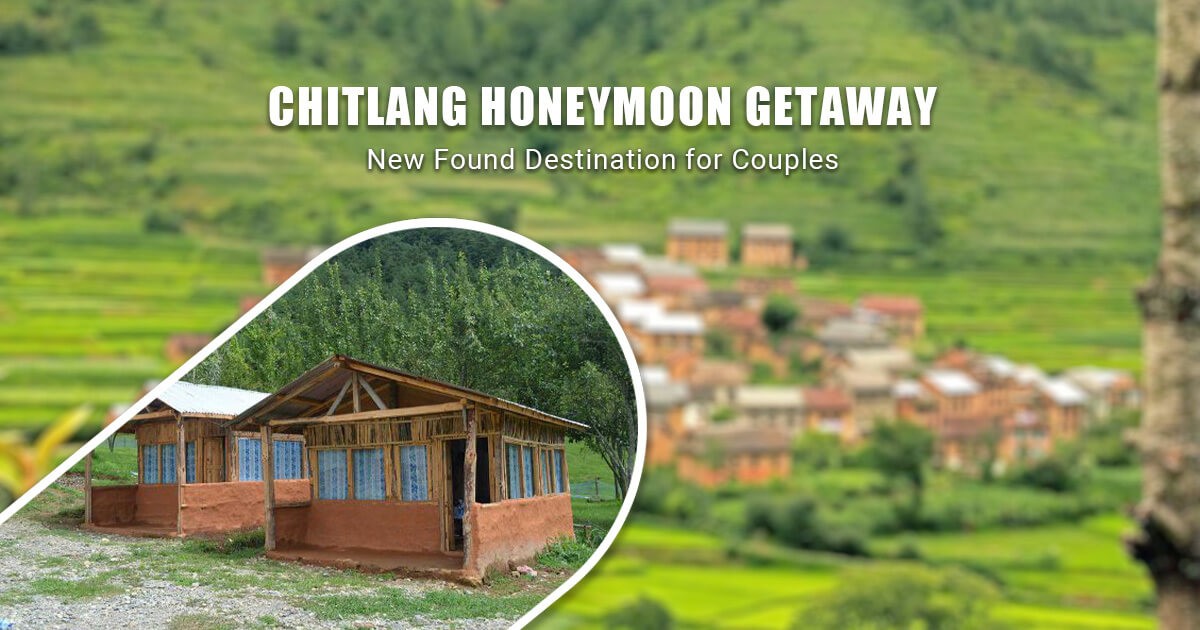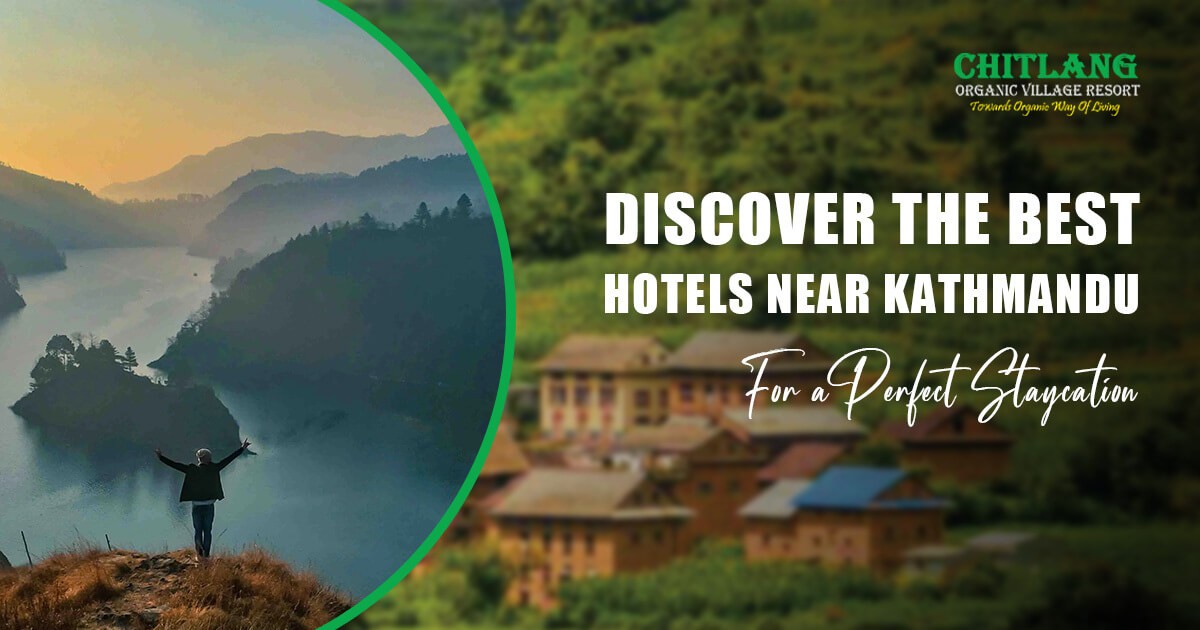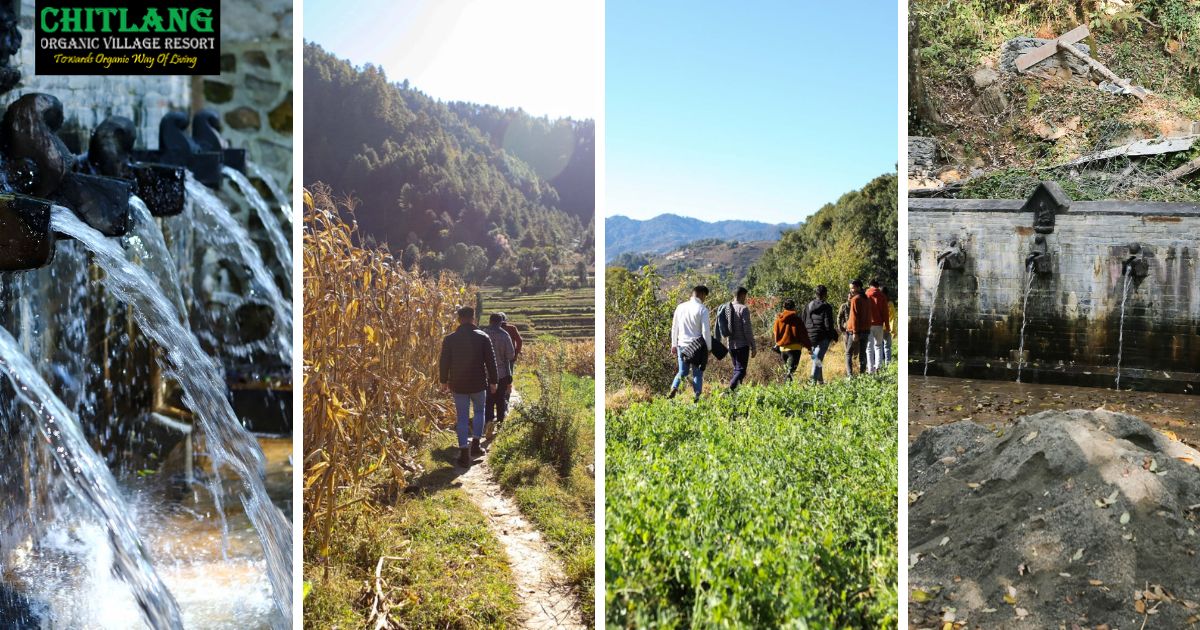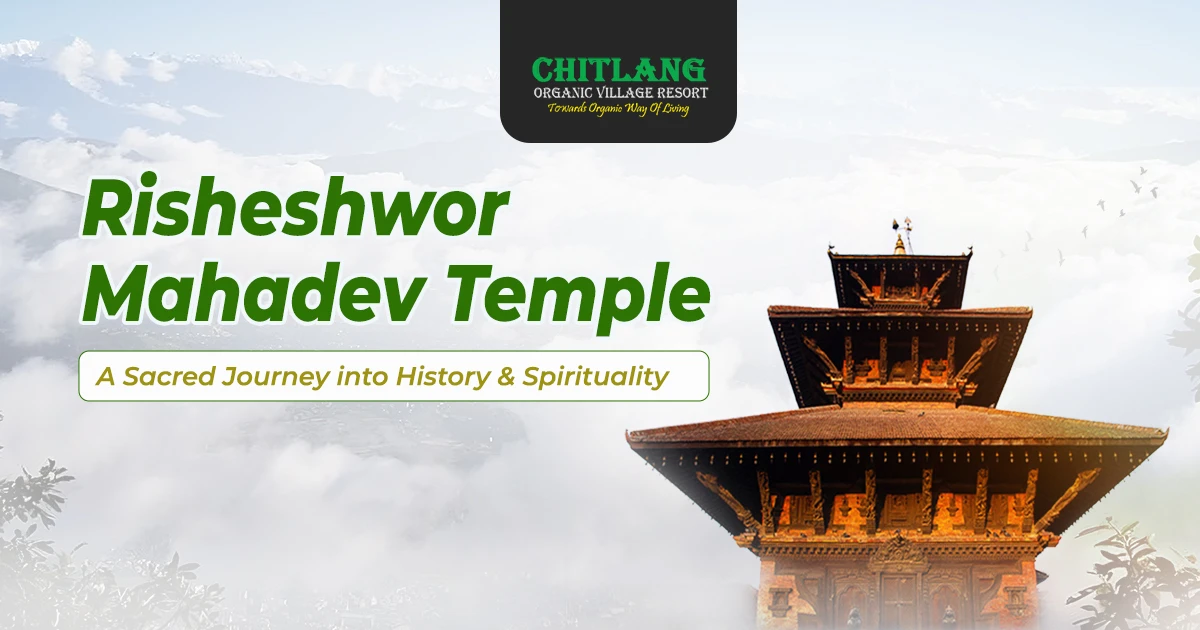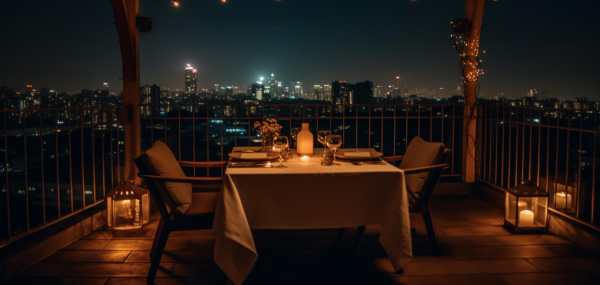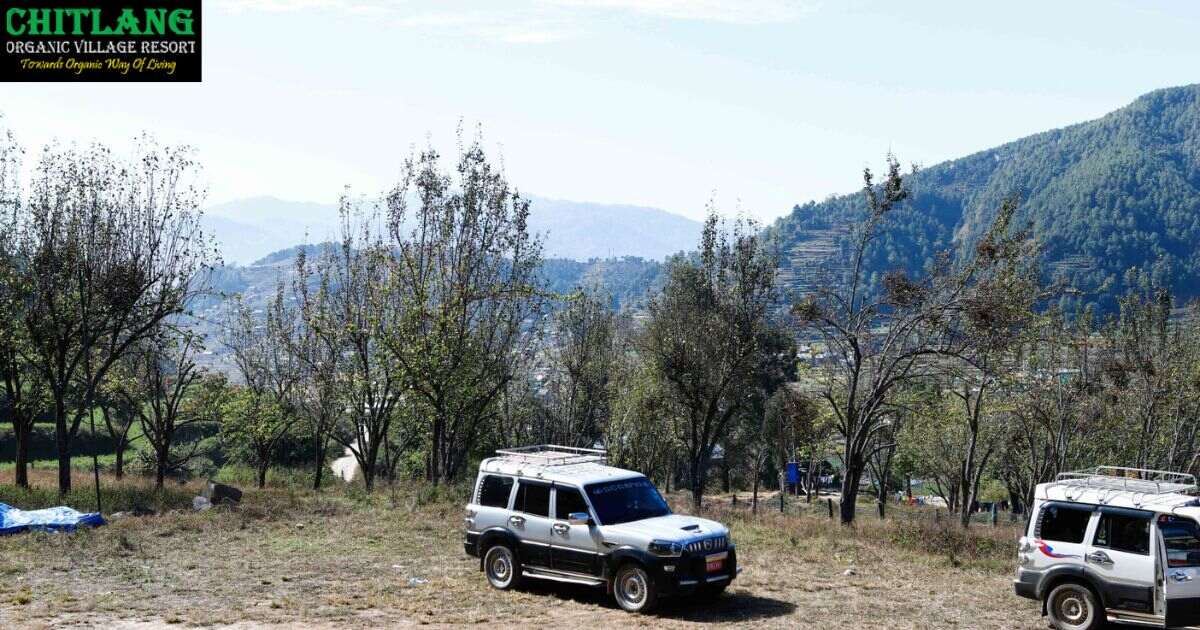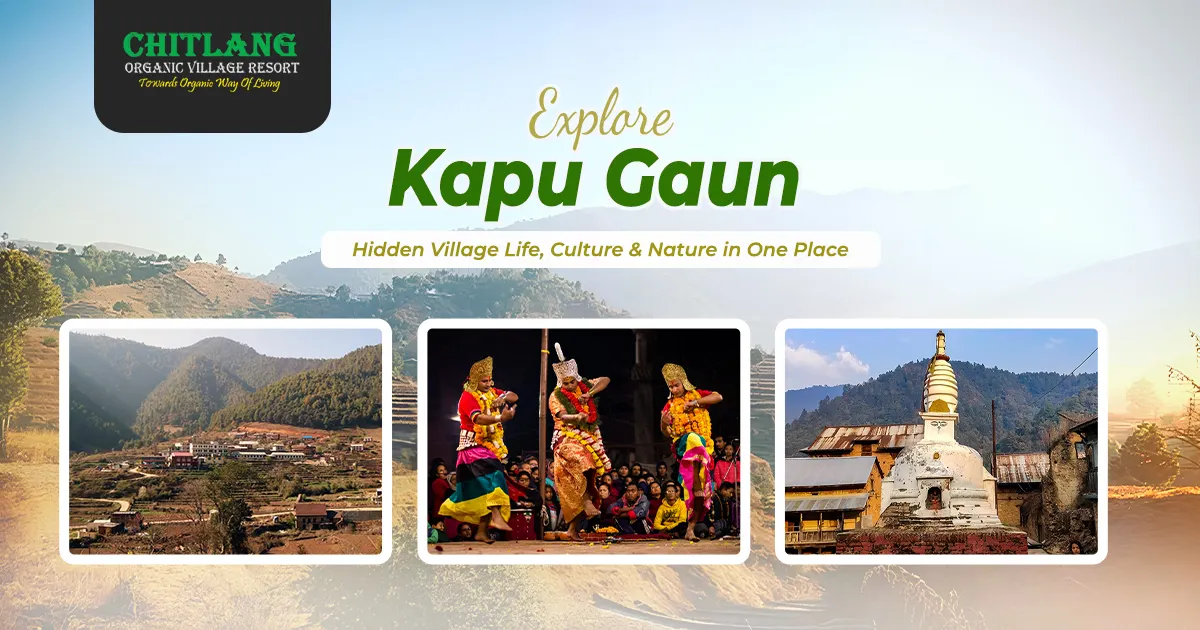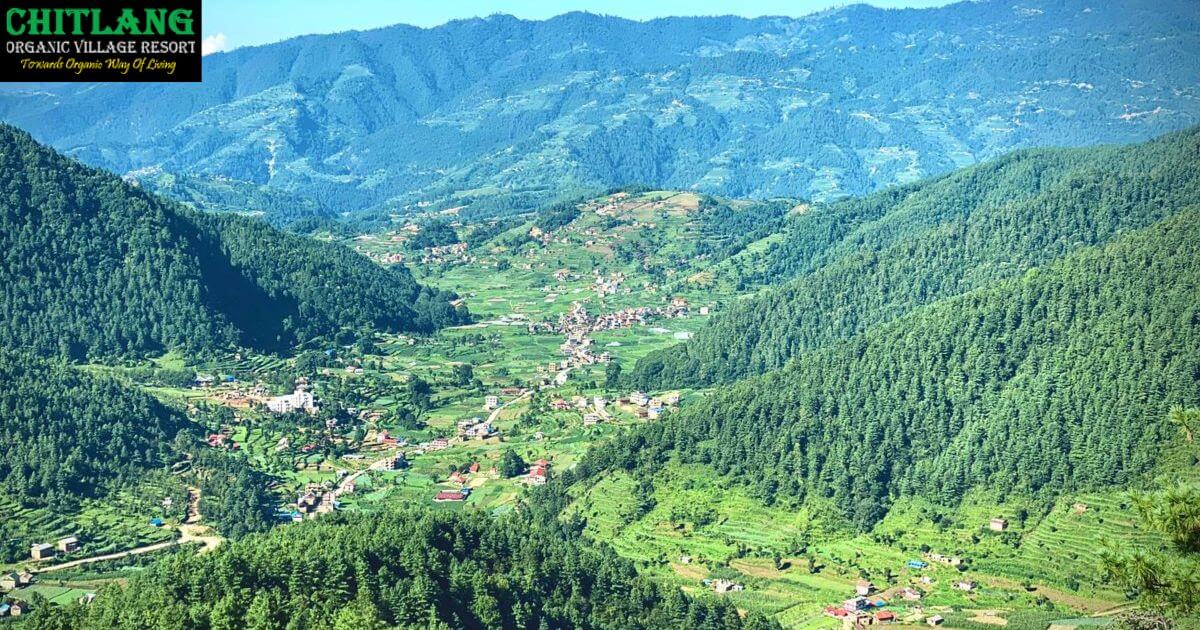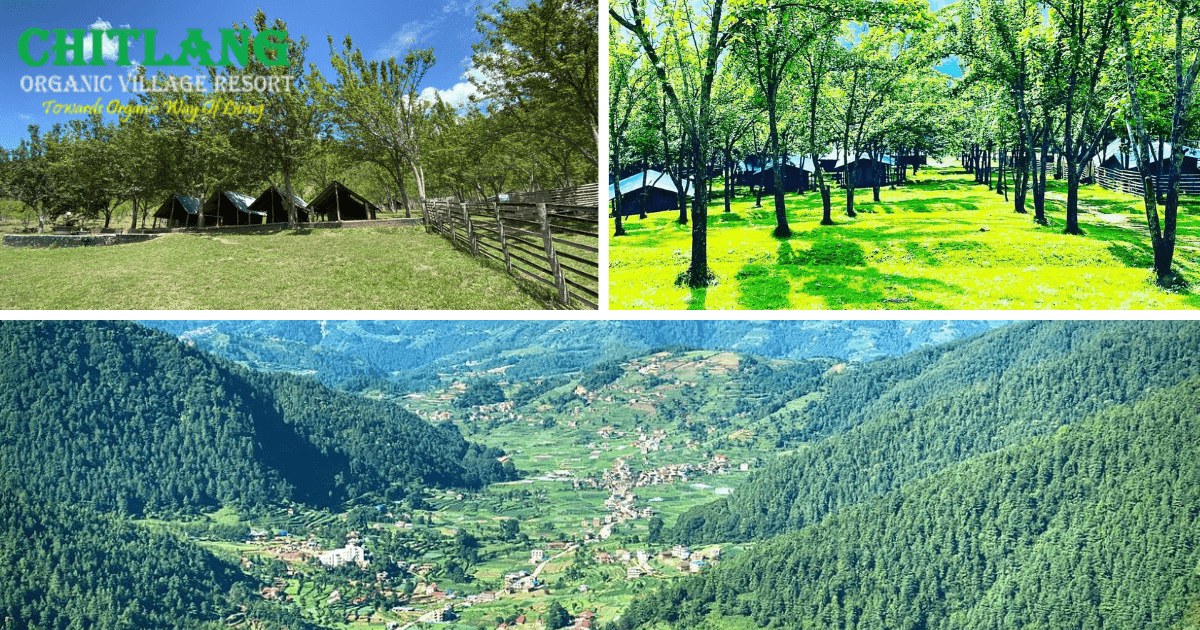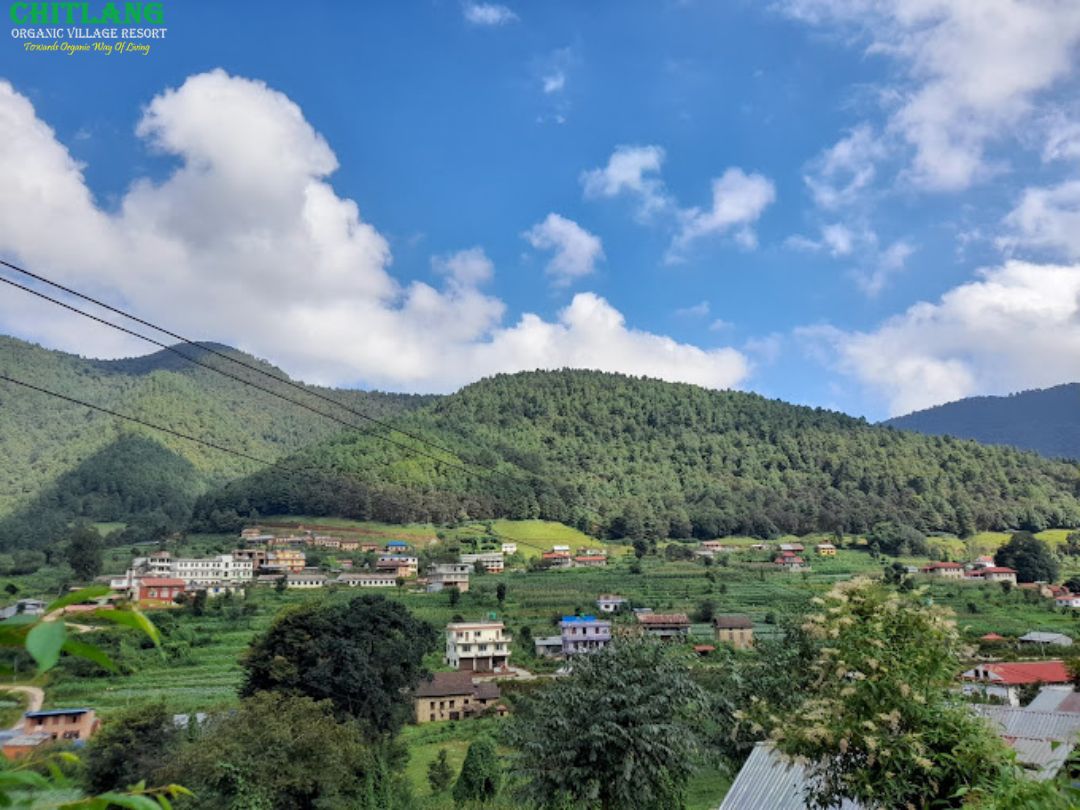Just 37 kilometres from Chitlang village, Nepal’s most unique temple awaits, where ancient spirituality meets pristine nature in perfect harmony. For travellers around the organic paradise of Chitlang, the Bajrabarahi Temple, located 8 kilometres south of Patan in Lalitpur, represents an ideal spiritual stop on the cultural itinerary that offers an extraordinary blend of mythological legends, architectural mysteries, and ecological wonders bundled into one sacred site.
Nestled in the green hills of Chapagaun, the enigmatic temple stands as the only major temple in Nepal without a pinnacle (gajur), surrounded by an 18.5-hectare dense jungle that also acts as a wildlife sanctuary and a spiritual retreat. Unlike typical religious destinations, Bajrabarahi combines tantric worship, environmental conservation, and cultural preservation uniquely, making it an ideal complement to your Chitlang organic village experience.
Mythical Origins of Bajrabarahi Temple
Mythically, the temple originates with a sacred pond where Goddess Bajrabarahi is believed to have incarnated, making the site inherently divine. Historical accounts say that the temple was built by King Shriniwas Malla of Patan in 784 BS (1664 AD) after receiving orders in a dream from the goddess to construct a shrine at the pond. The temple was built and consecrated on Chaitra Shukla Asthami, establishing it as the most important religious-cultural sights during the Malla period.
To further enhance the mystique, Bajrabarahi Temple stands out as the one major temple in the entire Kathmandu Valley without a gajur. The local folklore recounts that a priest had a dream that anyone who tried to erect the pinnacle would die; hence, it was decided that the temple would be left unfinished. It is also widely believed that if anybody takes leaves or twigs from the forest around the temple intentionally, that person will be cursed by bad luck or, even worse, be taken ill, thus forcing its people to regard the temple and the forest around it as a sacred spatiality.
Sacred Significance of Bajrabarahi Temple
Bajrabarahi Temple holds great spiritual and tantric significance, being dedicated to Goddess Bajrabarahi (Varahi), a powerful aspect of the Divine Feminine with a boar’s head on a human body. The name itself symbolizes divine power: “Bajra” means indestructible power, and “Barahi” refers to the goddess. One of the unique features of this temple is that it is accepted in both Hindu and Buddhist traditions—as Bajrabarahi in Hinduism and Vajra Varahi, an incarnation of Vajrayogini, in Buddhism. This dual cult has made the temple a rare centre of interfaith harmony in the Kathmandu Valley.
The temple, being one of the Ashta Matrika (eight mother goddesses) sites, is famous for providing special protection and blessings. People worship here for fertility, protection of cattle, and general welfare- that is, for their agrarian lifestyle of the community. The offering of milk, ghee, and curd to the sacred bull statue during rituals gives an insight into the age-old link between religious practices and their agricultural lifestyle.
Natural Beauty & Tranquil Atmosphere
The Bajrabarahi Temple Forest covers 18.5 hectares and serves as an important example of how spirituality and community conservation can go together. The forest is filled with biological diversity: it features 48 species of birds, the Spiny Babbler being a rare and endangered bird in Nepal, while on the other hand, it has more than 166 varieties of plants, including Himalayan orchids and medicinal herbs. This ecological richness is an excellent complement to Chitlang’s organic farmlands, where more than 160 bird species thrive, creating a much more diverse circuit for nature lovers. It also helps in climate resilience, with a carbon storage potential of about 191 tons per hectare.
What makes the Bajrabarahi–Chitlang connection unique is its role in sustainable tourism. While visitors enjoy farm tours, cheese-making, and cultural experiences in Chitlang, the Bajrabarahi forest offers a peaceful escape with meditation spots, forest bathing, and wildlife photography. Many homestays now include guided forest walks in their packages, turning the Chitlang–Bajrabarahi corridor into a benchmark destination for eco-spiritual tourism in Nepal.
Cultural Heritage and Festivals
Bajrabarahi Temple is a cultural treasure that adds life to Chitlang’s cultural tourism through its festivals and sacred traditions. The main event is the Bajrabarahi Jatra, conducted once every three years on Baishakh Purnima, comprising a procession with music and celebrations from everybody—a genuine alternative to Dashain festivities here in Chitlang. Other big celebrations include the nine-day celebration of Navaratri Jatra, Marasi Jatra, with Puja and procession, Purney Jatra falling during Kartik and Chaitra Purnima, and Krishna Dashami (Dashain), celebrated as the goddess’s birthday, attracting thousands of devotees.
The temple in the heart of the forest also reflects deeper cultural and spiritual practices intermixed with local life. The farmer offers the first milk of newborn calves to the goddess as a sign of fertility and prosperity, while traditional belief holds that not even fallen leaves, twigs, or dried wood can be taken away from that forest, serving as both a conservation measure and a spiritual tradition. The Bajrabarahi Temple, with sacred festivals and green traditions, is becoming one of the wedding venue hot spots, perfectly fitting in with and complementing Chitlang’s cultural and eco-tourism experiences.
Architectural Marvel: The Temple Without a Crown
Bajrabarahi Temple stands out with a unique 17th-century Newari craftsmanship, with the opportunity for visitors to compare its artistry with the traditional architecture of Chitlang village. The two-tiered pagoda-style building has intricate wood carving and copper roofing, and a unique fact is that the gajur, or pinnacle, in this case, is absent. This absence symbolizes spiritual incompleteness and is very much in line with the philosophy that this place promotes, which has Chitlang inclined towards raw, beautiful and authentic experiences over the polished tourist attractions.
The temple interior highlights the traditions of Shakti worship with a golden-plated idol of Goddess Bajrabarahi having three eyes, four hands, and a boar face. The surrounding shrines for Naag, Saraswati, Ganesh, and Shiva create a complete spiritual ambience, becoming a meeting point for the culture of devotees as well as travellers. These sacred elements, combined with Chitlang’s local handicrafts and nearby attractions like Swochhanda Bhairab Temple, make the area an alluring package for cultural and eco-tourism in Nepal.
Perfect Routes from Chitlang to Bajrabarahi
The advantageous location of the Bajrabarahi Temple is a great reason to incorporate it into any Chitlang tour package, with scenic routes connecting these two cultural gems. The shortest route is the direct one through Toukhel, covering only 6 kilometres and taking about 30 minutes by 4WD or motorcycle-ideal for an early-morning temple visit followed by lunch in Chitlang.
The Chitlang-Chandragiri-Bajrabarahi route is ideal for those who want maximum scenic value for 29 kilometres of really breathtaking mountain views and beautiful forest landscapes. This route can be combined with the Chandragiri cable car experiences for a complete mountain-to-valley spiritual adventure.
The route via Kulekhani-Markhu can offer good possibilities for combining boating activity with temple visits-perfect for visitors staying at Chitlang resorts who want to experience both refreshing water and forest environments.
Modern Tourism and Sustainable Access
The Chitlang-Bajrabarahi circuit is now especially recognized as one of the best eco-spiritual destinations in Nepal, where sustainable tourism not only enhances the local economy but also preserves its richness for future generations. In other words, both places are examples of low-impact tourism practices, providing authentic experiences compared to mass commercialization. Chitlang can be reached directly by public buses coming from Kathmandu. Various options for accommodation range from homely stays to more organic resorts, and entry to this temple is free to everyone and donation-based for conservation.
Tourism here is managed in such a way that a responsible balance is kept. While resort booking systems are integrated at Chitlang to check visitor numbers, Bajrabarahi Temple brings in almost deserted days of the week for the sacred space traveller, while keeping weekends lively for cultural tourists. This eco-friendly approach, combined with authentic traditions and natural beauty, makes the Chitlang-Bajrabarahi circuit a very attractive destination for eco-conscious travellers and those in search of genuine experiences in culture-rich Nepal.
Comparison of the Bajrabarahi Temple and Chitlang Experience
| Experience | Bajrabarahi Temple | Chitlang & Surroundings |
|---|---|---|
| Spiritual Value | Hindu & Buddhist harmony, mythical goddess worship | Ancient Newar settlements, local traditions & rituals |
| Nature & Biodiversity | 18.5-hectare sacred forest, 48 bird species, rare flora & fauna | Terraced fields, orchards, Kulekhani reservoir, lush green hills |
| Cultural Experience | Mythology-based rituals, local festivals | Newar heritage, goat cheese making, and homestays |
| Activities | Pilgrimage, forest walks, birdwatching | Hiking, cycling, boating, and cultural exploration |
| Accessibility | Close to Kathmandu, accessible by road | Short trek from Chandragiri or road access via Kulekhani |
Best Time To Visit Bajrabarahi
Bajrabarahi Temple is best visited during the slightly cooler and drier months from October to March, when the weather is pleasant and ideal for the wonderful exploration of the sacred temple and its surrounding forest. Early morning, especially at weekends, is the best tranquil period with less crowd to enjoy bird watching as well as spiritual solitude.
However, the temple draws a crowd and is very much alive during festivals such as Navratri and Bajrabarahi Jatra, alive and vibrant with culture for visitors wishing to have this kind of more immersive experience. Weekdays are perfect for those looking for peaceful forest walks and greater depths of nature
Why is visiting during the festival of Baishakh Purnima special at Bajrabarahi?
There is a special significance to visiting at Bajrabarahi Temple during Baishakh Purnima, as it is during this festival that the grand Bajrabarahi Jatra is held, which is the highlight and by far the most awaited festival held every three years. For three days, the hordes of devotees flock to the temple from all over Nepal to honour the goddess Bajrabarahi. The celebration is filled with a grandeur of religious processions, the offering of traditional music, and many ritual animal sacrifices, which contribute to generating a heavy atmosphere of spiritual energy and community devotion.
The festival transforms the temple and surrounding forest into a hub of cultural and religious activity. The Baishakh Purnima is a grand opportunity for tourists to see the authentic Newar traditions amid the display of tantrik worship. The festivities are a riot of colour and energy, enhancing the aura of mystery and sanctity around Bajrabarahi Temple, where visiting during this time becomes an unforgettable experience of immersion and strength.
Conclusion
The Chitlang-Bajrabarahi spiritual circuit takes travellers to a genuine taste of authentic Nepal far beyond the usual tourist trails. The unique blend of organic village life with ancient temple traditions and the rich natural forests provides a unique synthesis of cultural experiences that honour both tradition and innovation while supporting community development and environmental conservation through sustainable tourism.
Book your adventure with local operators who respect cultural sensitivities and conservation initiatives. Whether you want spiritual rejuvenation, culture, or natural beauty, this hidden circuit in Nepal remains joined by hospitality, spirituality, and environment. Start your journey from the Chitlang Organic Village Resort to look for tours and stays, and some seasonal tips for an unforgettable experience.


